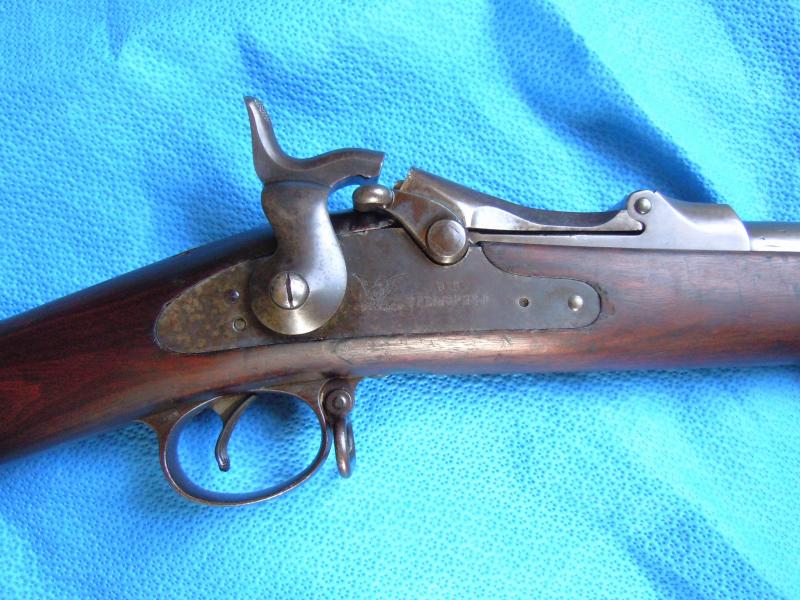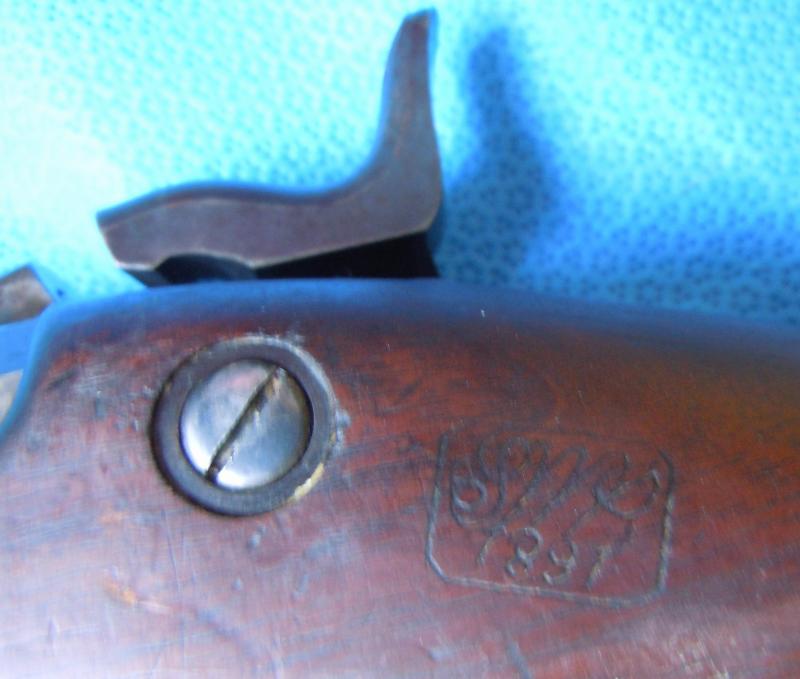Springfield Model 1884 Trapdoor Rifle
This is a decent Model 1884 Springfield “Trapdoor rifle”. This particular rifle is dated 1891 as evidenced by the nice inspector’s cartouche on the wrist of the butt. These rifles saw plenty of service in the Indian Wars and of course the “leaders of the free world” were also busy using these rifles in the Spanish American War and the Philippine Insurrection.
The Springfield model 1884 was one of the "Trapdoor Springfield" rifles. It was an improved replacement for the previous longarm of the U.S. Armed Forces, the Springfield model 1873.
The model 1884 traces its roots back to the design of the Springfield 1873. The model 1884 incorporated a significant number of improvements that had been made between 1878 and 1879. It also featured a serrated trigger that had been incorporated into the Springfield rifle design in 1883.
The most dramatic change to the rifle design, which is often considered to be the identifying feature of the model 1884, was a new rear sight which had been designed by Lieutenant Colonel Adelbert R. Buffington of the U.S. Army Ordnance Department. This sight however was not perfected until 1885.
The principal feature of this new sight was a rack and pinion style windage adjustment. Unlike previous sights, the base was not used for any position other than point blank. The raised leaf had graduations from 200 to 1400 yards. A new barrel band was also designed to accommodate this new sight so that it could lie flat in the point-blank position.1
Marksmen generally favoured the new sight, but general troops were less enthusiastic about it and often considered it to be an annoyance.
The model 1884 was also produced in a carbine version. It was found that the rear sight could be easily damaged when removing the rifle from the carbine boot. The rear barrel band was therefore modified in 1890 to include a rear sight protector.
A round-rod bayonet model was also produced, designated the Model 1888. This, like the Springfield model 1880, was an attempt to combine the cleaning rod and bayonet into a single unit. The Model 1888 included an improved retaining mechanism, as the Model 1880's retaining mechanism had proved to be problematic. This rifle has the modified bayonet which has a head similar to a Phillips screwdriver and it is threaded at the bottom to take a jag. The butt has a compartment for an additional 2-piece cleaning rod.
These bayonets were never popular as they had a propensity to bend which made their return into the rifle difficult if not impossible. The idea was good to utilise the space normally occupied by the cleaning rod but in practice it did not work and certainly did not look as intimidating as an Enfield or Mauser bayonet.
The mechanism of this rifle is excellent and it has a good bore for shooting. Overall, a very tidy trapdoor with a nice walnut stock with not much wrong with it. One small sliver of wood missing in the bayonet groove where it was put back in a hurry but not noticeable unless you look for it.
This rifle can be owned and fired on a Section 1 firearms license and cases are readily available. The rifle has been proofed for Black Powder in the UK.
Code: 50687







